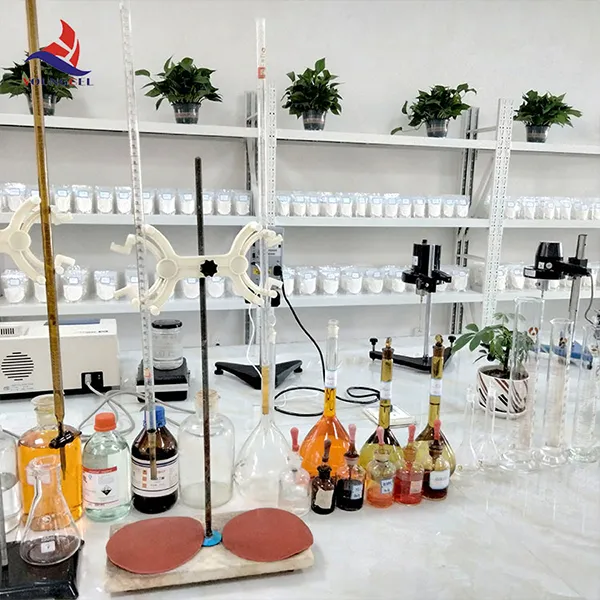The Versatile Applications of Hydroxypropyl Methylcellulose (HPMC)
Hydroxypropyl methylcellulose (HPMC) is a widely used biopolymer derived from cellulose, which has gained prominence in various industries due to its unique properties. As a semi-synthetic polymer, HPMC exhibits excellent solubility in water, forming a clear and viscous solution. This characteristic, along with its ability to create films, thickening capabilities, and emulsifying properties, makes HPMC an essential ingredient in a myriad of applications ranging from pharmaceuticals and food products to construction materials and personal care items.
Pharmaceutical Applications
In the pharmaceutical field, HPMC is primarily utilized as a binder and filler in tablet formulations. Its ability to form a gel-like consistency upon hydration is beneficial in drug delivery systems, allowing for controlled release of active pharmaceutical ingredients (APIs). This property is particularly valuable for medications requiring sustained release, improving efficacy and patient compliance. Additionally, HPMC serves as a stabilizer in suspensions and emulsions, ensuring the uniform distribution of drug particles. Its safety profile, being non-toxic and non-allergenic, further reinforces its extensive use in the pharmaceutical industry.
Food Industry Usage
HPMC is also a significant ingredient in the food industry, where it acts as a thickening agent, emulsifier, and stabilizer. It is commonly found in gluten-free products, providing the necessary texture and moisture retention that is often lacking in gluten-free formulations. Furthermore, HPMC is used in sauces, dressings, and dairy products, enhancing product consistency and mouthfeel. The FDA recognizes HPMC as a Generally Recognized As Safe (GRAS) substance, ensuring its acceptance in food applications. With the rising demand for healthy and clean-label products, HPMC's role as a functional ingredient continues to expand.
Construction Industry Contributions
In the construction domain, HPMC is utilized as an essential additive in cement-based materials, such as mortars, tile adhesives, and dry-mix formulations. Its water retention properties are crucial in preventing early drying of the mix, allowing for better workability and adhesion. HPMC also contributes to the formation of a smooth texture in plaster and other finishes, enhancing the aesthetic appeal of buildings. As the construction industry trends towards sustainable building practices, HPMC provides an eco-friendly alternative to synthetic polymers, aligning with the industry's efforts toward reducing environmental impact.
hpmc cellulose hydroxypropyl methyl

Personal Care and Cosmetics
The personal care and cosmetics industry benefits significantly from HPMC's thickening and film-forming properties. Its use in lotions, creams, and shampoos allows for the creation of stable emulsions, improving the overall texture and user experience. Moreover, HPMC acts as a humectant, attracting moisture to the skin, which is particularly important in the formulation of skincare products. As consumers become increasingly aware of ingredient safety, the natural origin of HPMC makes it a desirable choice for formulators seeking to create clean-label products.
Environmental Impact and Sustainability
One of the notable aspects of HPMC is its biodegradability, making it an environmentally friendly option compared to conventional synthetic polymers. As industries seek more sustainable practices, the demand for biodegradable materials is on the rise. HPMC fits this criterion, minimizing ecological impact while providing high performance in various applications. Furthermore, its sourcing from renewable biomass underscores the potential for HPMC to contribute positively to sustainability goals worldwide.
Future Prospects
As research and development in the field of biopolymers continue to advance, the potential applications of HPMC are predicted to expand significantly. Innovations in drug delivery technologies, food formulations, and sustainable construction materials are likely to drive growth in the use of HPMC. The increasing trend towards healthier food options, coupled with the demand for more effective pharmaceuticals and environmentally friendly construction materials, positions HPMC as a pivotal ingredient in meeting these global needs.
Conclusion
Hydroxypropyl methylcellulose showcases a remarkable versatility across various industries, driven by its unique chemical properties and safety profile. As a crucial component in pharmaceuticals, food production, construction, and personal care, HPMC's applications are vast and ever-evolving. With sustainability at the forefront of global challenges, HPMC stands out as a promising solution that aligns with the vision for a greener future. The continued exploration of HPMC's capabilities will undoubtedly unlock further innovations and improvements across multiple sectors.
-
Rdp Powder: Key Considerations for Wholesalers in the Building Materials IndustryNewsJul.08,2025
-
Key Considerations for Wholesalers: Navigating the World of Hpmc - Based ProductsNewsJul.08,2025
-
Hpmc Detergent: Key Considerations for WholesalersNewsJul.08,2025
-
Key Considerations for Wholesalers: China Hpmc For Tile Adhesive, Coating Additives, Concrete Additives, and MoreNewsJul.08,2025
-
Crucial Considerations for Wholesalers: Navigating the World of Construction MaterialsNewsJul.08,2025
-
Key Considerations for Wholesalers Sourcing Additive For Cement, Additive For Concrete, Additive For Putty from Additive Manufacturer Shijiazhuang Gaocheng District Yongfeng Cellulose Co., Ltd.NewsJul.08,2025




